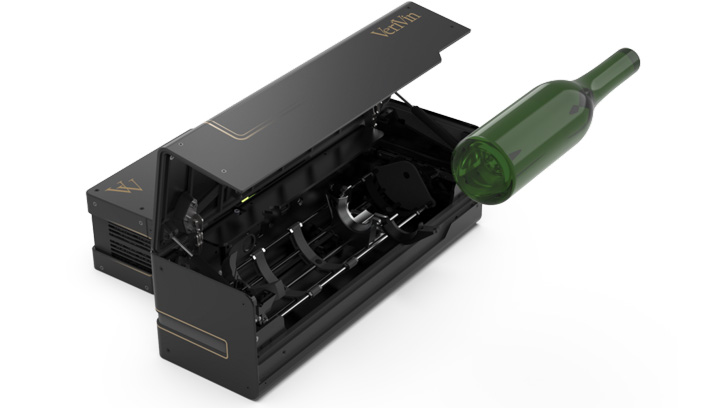Uncorking Wine Fraud With Spectroscopy
STARTUPS & INNOVATORS
Few consumers had even heard of wine fraud before 2014, when Rudy Kruniawan was convicted and sentenced to 10 years in prison for mail and wire fraud, having scammed Los Angeles wine collectors with more than $30 million of fake vintages. The trial resulted in an award-winning Netflix documentary, Sour Grapes, in 2016, and shone a spotlight on a problem dating back to the ancient Romans, who enacted laws against adulterated wine (fraudsters then added toxic lead acetate to sweeten wines).
Today, a startup in Oxford, England, aims to curb wine and other forms of food fraud by leveraging spectroscopy to analyze a bottle’s contents, without ever popping the cork. Cecilia Muldoon, the CEO of VeriVin, began the project three years ago, after completing her PhD in experimental atomic and laser physics. The idea is to spot irregularities without the costly product waste of opening potentially expensive vintages.
“It just occurred to me on the train to work one day, why do people not use some form of spectroscopy to analyze wine instead of having to send an open sample to a lab?” Muldoon says.
Edoardo Ceci Ginistrelli, a 31-year-old scientist who specializes in the chemistry of glasses and is head of engineering for VeriVin, adds, “It is hard to distinguish between a real or fake label, or to understand if the expensive bottle has just been refilled with a different wine.”
Food fraud impacts a broad range of products, including milk, cumin, oregano, Kobe beef, honey, olive oil, saffron, coffee, maple syrup, and others. Much of it goes unnoticed because the fraud is subtle and hard to identify by a non-expert eye. An olive oil dealer might seek a higher profit by mixing extra virgin olive oil with lower quality oil, for example. But beyond economic damage, such frauds can result in serious harm: In the 1980s European scammers added antifreeze to wines, which killed 23 people and blinded dozens more. In 2008 in China, melamine in watered-down milk killed at least six children and injured 300,000 more.
VeriVin’s machine is based on Raman spectroscopy—the interaction between the laser and the material hit by it. “It’s like turning on a light bulb beneath a bottle of olive oil,” Ginistrelli says. The light passes through the bottle’s glass, diffusing in the liquid, and the same thing happens with the laser shot by the spectroscope. When in contact with matter, in this case wine, a few photons change their energy (identifiable by the light’s slight change in color): this change derives from the molecules’ chemical composition. From these changes, Ginistrelli extrapolates graphs that are the digital imprint of the material he’s looking at: chardonnay wine molecules will have a different chart than a Malbec wine.
Chelsea Snare, managing director of Wine Fraud, a member-based network that works to educate on wine frauds, cautions that spectroscopy is expensive and needs base samples—authentic bottles to be used as comparisons. “As it [spectroscopy] stands, it may be able to give some indicator of greater area, but doubtful down to the vineyard. In the case of wine, the specific vintage can make a huge difference in regards to its value,” Snare says. However, detecting by hand fake vintages requires training and time, leaving space for human error. Reliable technology could be a better option.
The challenge VeriVin is undertaking involves not only the creation of affordable technology but also shaping a database of wines. The objective is a data set to detect fake wines, as well as wines that have spoiled.
“We can already see when wines are oxidized,” Ginistrelli says. VeriVin can detect a fake whiskey in 10 seconds (because bottles are transparent) and a frauded bottle of wine in one minute (because the glass is thicker, and wines are more complex). Large winemakers are interested in the machine to detect at source wines that might have gone bad before issuing them to the market, therefore zeroing the losses on bottles recalled by customers.
The more the machine would be diffused in the chain, the easier it would be to detect where the fakes come from. And VeriVin’s goal is also to explore other industries where its machine could come in handy to tackle frauds. VeriVin works with liquids, but spectroscopy can be used on other materials and foods, as well. The machine can already test, for example, the authenticity of a manuka honey or olive oil.
“In the future, technology and data analysis will have an important role in food protection,” Ginistrelli reflects. “It will not be immediate because the agribusiness market is conservative, but there is a demand for it.”


